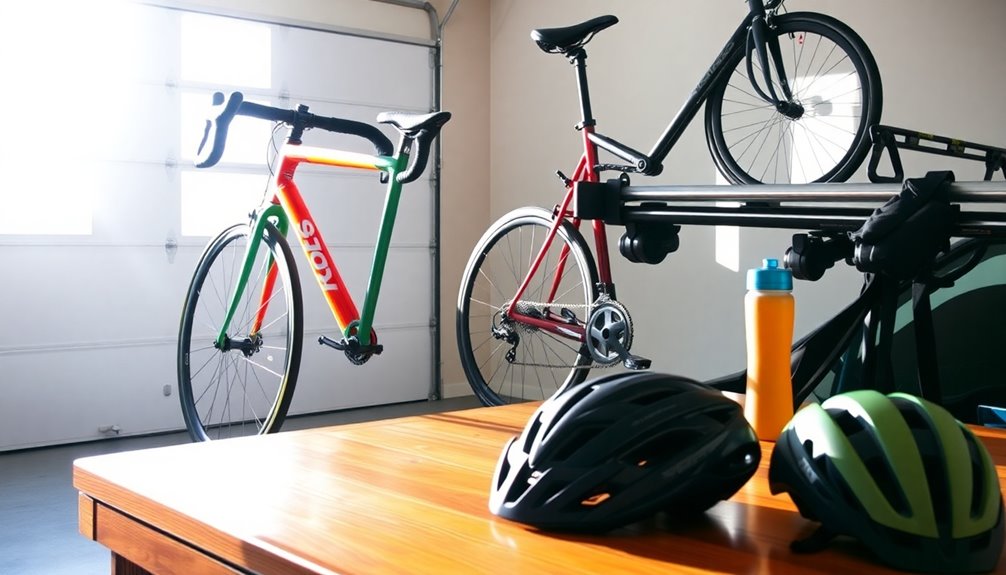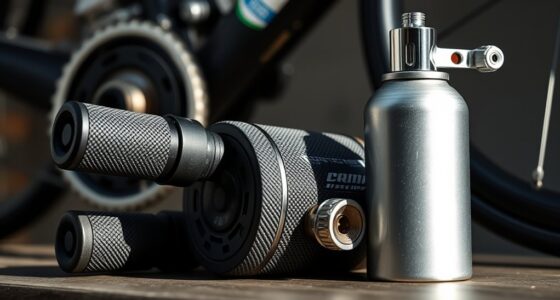To safely transport your bike, start with proper preparations like checking airline policies and using a suitable bike rack. Depending on your vehicle, you might need to remove wheels or invest in an anti-theft system. If you're flying, consider using a hard case for protection, and label your box to guarantee careful handling. Finally, adjust your bike setup for altitude changes. There's plenty more essential advice to help you along your journey.
Key Takeaways
- Use a compatible bike rack or disassemble the bike to fit inside the car for secure transport.
- Check airline policies for bike transport fees and consider using hard cases for better protection.
- Adjust tire pressure by 2 psi for altitude and recalibrate suspension to ensure optimal bike handling.
- Label containers with "Handle with Care" to encourage gentle handling during transport.
- Choose quality bike rentals with adjustable components and maintenance support for a better riding experience.
Pre-Trip Preparations for Bike Transport
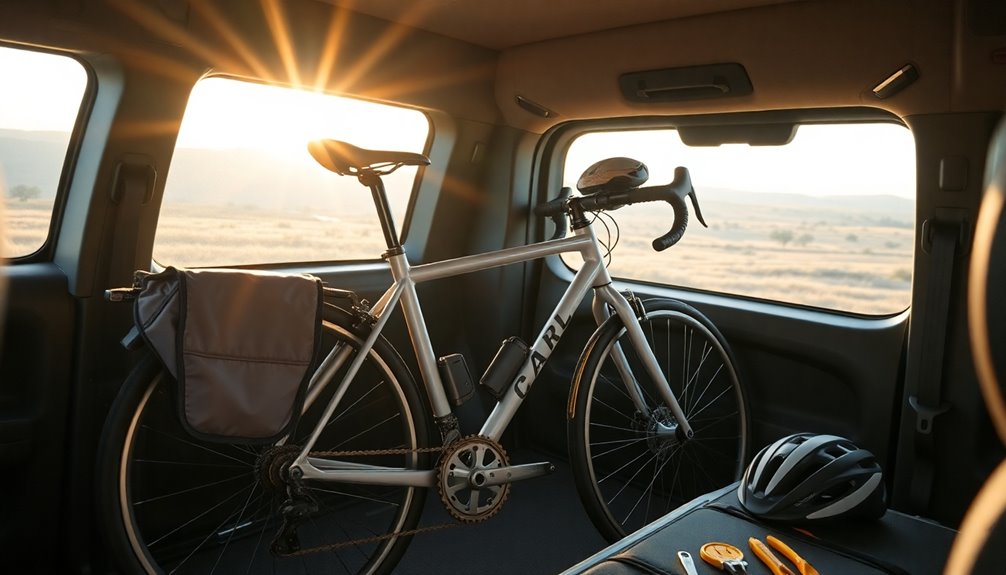
Before you hit the road or take to the skies with your bike, it's essential to prepare thoroughly to guarantee a smooth journey.
Proper preparation is key for a smooth bike journey, whether you're driving or flying.
If you're planning to transport your bike by car, using a bike rack is often the best option for easy loading. For smaller cars, you might need to remove the wheels to fit your bike in your car. Make sure you can still access the trunk for your gear.
If you're flying, familiarize yourself with airline policies regarding bike transport, as fees can vary greatly.
Also, check all bike components, ensuring brakes and tires are in good condition. Don't forget to adjust your tire pressure for altitude, adding around 2 psi if you're traveling to higher elevations.
Best Methods for Transporting Your Bike by Car

When you're ready to transport your bike by car, choosing the right method can make all the difference in ensuring a hassle-free experience.
You have several options for transporting your bike: you can fit it inside the car, use a roof rack, trunk rack, or hitch rack. If you decide to transport your bike inside the car, remove the front wheel, and possibly the rear wheel, to avoid damage.
For larger SUVs, you mightn't need disassembly. When using the best bike racks, check compatibility with your vehicle and secure your bike to prevent movement.
Consider investing in an anti-theft system for added security while traveling. Whichever method you choose, make sure you're well-prepared!
Air Travel Considerations for Your Bike
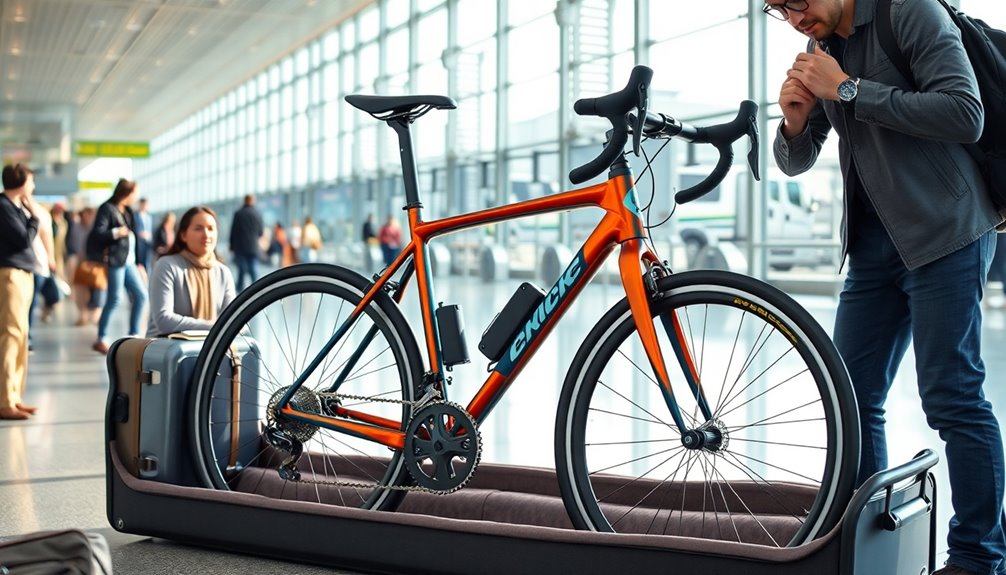
Transporting your bike by air requires careful planning to avoid unexpected fees and guarantee your bike arrives safely.
Before booking your flight, check the specific airline's bike transport policies, as fees can vary considerably, sometimes reaching $150 each way.
Consider using hard cases for the best protection, though they're heavier and pricier. If you opt for a cardboard bike box, be ready to disassemble parts of your bike—these are often only good for one trip.
Properly label your container with "Handle with Care" to ensure gentle handling.
For added security, think about using tracking devices like AirTags or Tiles in your bike bag, so you can locate it easily if it gets lost during air travel.
Choosing the Right Bike Rentals
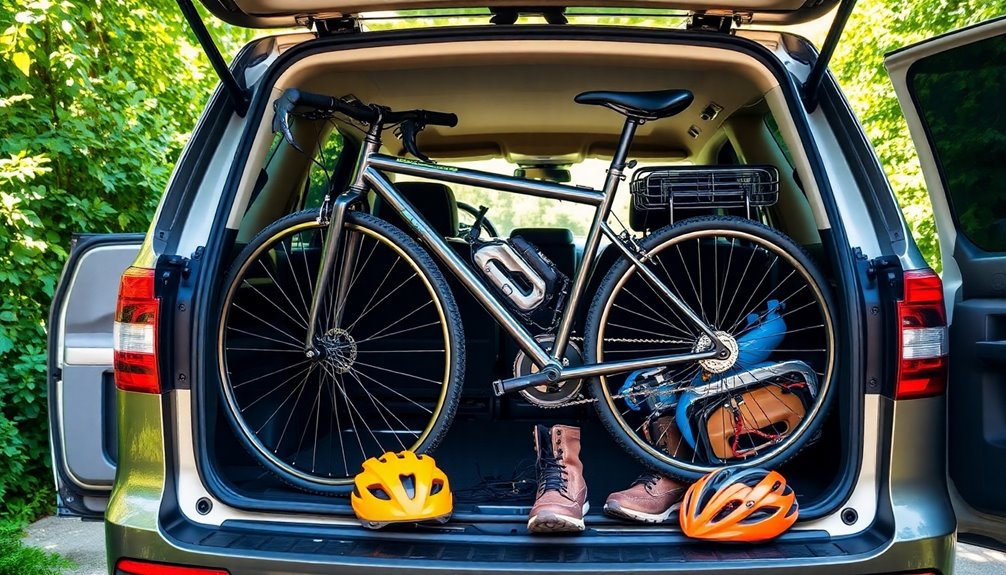
After maneuvering air travel with your bike, you might find yourself needing a rental for your next adventure. When choosing a bike rental, prioritize quality and ascertain the bike suits your riding style.
Here are some key factors to ponder:
- Adjustable components: Look for options that allow you to customize saddle height and handlebar position for comfort.
- Tire types: Opt for tubeless tires to minimize flats and enhance reliability.
- Maintenance support: Choose rental services that offer on-site repairs or tools for any issues during your ride.
Before committing, read customer reviews to gauge the rental shop's reputation and confirm you're getting a well-maintained bike. Additionally, consider rentals that offer electric bike conversion kits to enhance your riding experience, especially for urban commuting.
This way, you'll be set for a fantastic cycling experience!
Adjusting Your Bike Setup for Altitude Challenges
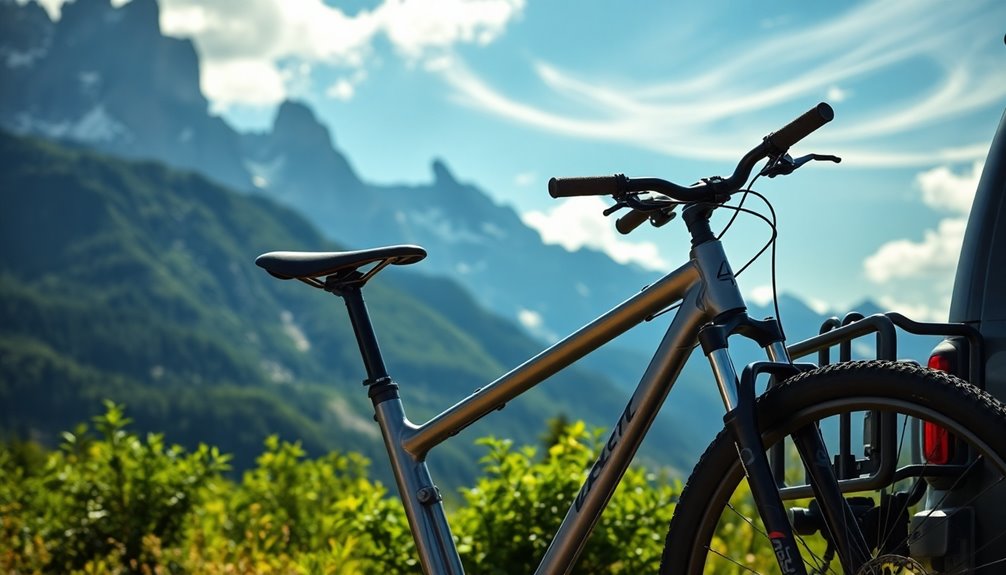
As you prepare for high-altitude rides, adjusting your bike setup becomes essential for maintaining ideal performance.
Start by increasing your tire pressure by about 2 psi; with atmospheric pressure dropping at higher elevations, this helps prevent a bouncy ride or rim damage.
Increase tire pressure by 2 psi to counteract lower atmospheric pressure at high elevations, ensuring a smoother ride and avoiding rim damage.
If you have air suspension, recalibrate the air pressure to guarantee peak bike handling, as sag can change considerably.
Riders with coil suspension don't need to adjust air pressure, but those with air setups should tailor theirs for altitude challenges.
Anticipate changes in bike handling and performance due to lower oxygen levels, and make these adjustments for a smooth riding experience.
Properly adjusting your bike setup will set you up for success while transporting your bike to higher elevations.
Frequently Asked Questions
How Can I Protect My Bike While Transporting?
To protect your bike while transporting, wrap the frame and components with foam pipe insulation or bubble wrap to prevent scratches.
If you're flying, consider a hard case for extra protection, or use a padded plastic bag for a lighter option.
Secure the rear derailleur with bubble wrap and zip tie the crank arm.
Label your container with "Handle with Care" and check weight limits for your bike rack to guarantee everything stays safe.
What Is the Best Way to Transport a Bike?
You've got a thrilling adventure ahead, but how will you get your bike there safely?
The best way to transport your bike depends on your journey. If you're flying, check airline policies—some hit you with hefty fees.
For road trips, larger vehicles can fit bikes inside easily, while racks vary in compatibility. Consider a hard case for maximum protection or a lightweight bag for convenience.
Don't forget to adjust tire pressure for elevation changes!
How Do I Prepare My Bike for Transport?
To prepare your bike for transport, start by disassembling it—remove the wheels, pedals, and handlebars so it fits snugly in a container.
Wrap the frame and components in protective materials like bubble wrap to prevent damage. Inflate the tires to a suitable pressure, adjusting for altitude if needed.
Secure vulnerable parts with zip ties or additional padding, and document the packing process with photos to make reassembly easier when you reach your destination.
Is It Okay to Lay a Bicycle on Its Side?
You might think laying your bike on its side is harmless, but it can actually cause some serious damage.
Sensitive parts like the derailleur and brake rotors might get misaligned or bent. If you have to lay it down, make certain the chain side faces up to reduce risks.
Using padding can help protect the frame and components. Always check your bike's condition afterward to guarantee everything's aligned and ready for your next ride.
Conclusion
In the grand journey of life, your bike is more than just a vehicle; it's your trusty steed. By preparing wisely and choosing the right transport methods, you guarantee your ride arrives safe and sound, ready to conquer new trails. Whether you're cruising down a winding road or soaring through the skies, a little foresight goes a long way. So, gear up, embrace the adventure, and let your wheels spin stories that are waiting to be told.
